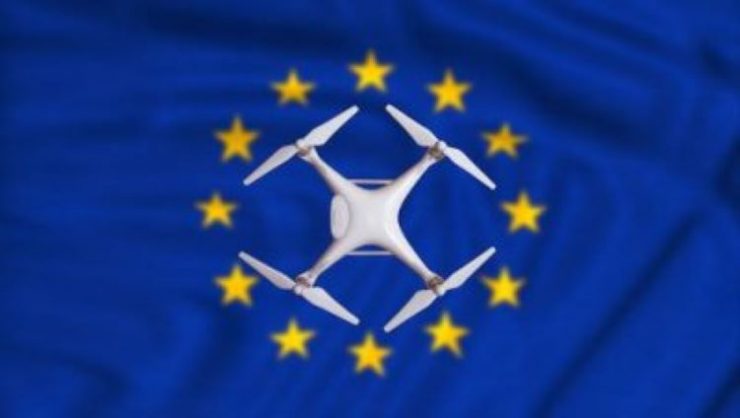By Jenny Beechener
Some foundation services necessary for the first phase (U1) of Europe’s U-space programme set out in the U-space roadmap are not going to be complete for several years, based on compliance data published on the ATM Master Plan electronic portal. This tracks the status of deployment activity in line with objectives set out in the high level 2020 ATM Master Plan which was formally approved by the SESAR Joint Undertaking in December 2019. The EU roadmap anticipates availability of U1 services including e-registration, e-identification and pre-tactical geofencing from 2019. However, the 2020 ATM Masterplan deployment view shows these services available in less than six states within the area covered by the European Civil Aviation Conference (ECAC), while many more are expected to take more than five years to complete deployment.
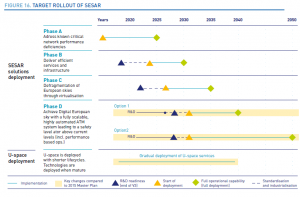
The online ATM portal tracks the implementation activities of states, highlighting where there may be delays in terms of hitting the planned implementation deadlines outlined in the Executive View of the European ATM Master Plan. Based on data published in the portal, many states have yet to implement U-space foundation services, and several yet to input data, suggesting a risk of delay unless efforts are accelerated.
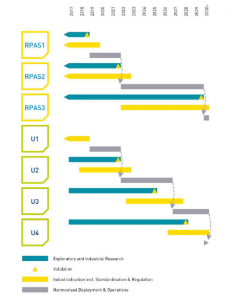
A number of states have succeeded in introducing e-registration (for example Poland, Germany, Italy, France) and are on track to introduce e-identification and geofencing in the near future, but according to the 2020 ATM Masterplan many more will be late. The updated publication reflects results of the formal stakeholder consultation carried out in 2019 and highlights the research, standardisation and industrial development still necessary to realise U-space services.
SESAR first published timelines for the implementation of U-space in 2018 using a sequence of milestones outlined in the U-space Roadmap which progress from foundational services (U1) from 2019, initial services (U2), advanced services (U3) and finally full services (U4) from 2035.
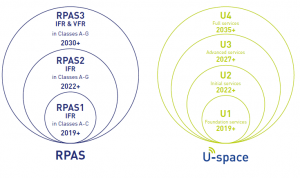
Exploratory research is underway in all areas, and the European ATM Masterplan shows the next step of industrialisation and standardisation work already started for U1 and U2 services paving the way for gradual deployment between 2019 and 2026. In the case of U3 and U4 services, industrialisation is expected to start in 2022 and will continue at least until 2030. This is designed to bring about harmonised deployment and operations between the late 2020s and 2035, and beyond.
U-space services will require a high level of digitisation and automation of functions in addition to specific procedures to support safe, efficient and secure access to airspace for large numbers of drones. U-space is expected to eventually facilitate routine missions in all classes of airspace.
In order to align with the delivery of the SESAR vision the ATM Masterplan deployment view “envisages the development and implementation of U-space services being used as a ‘laboratory’ to support the gradual implementation of faster life cycles in the manned aviation environment.” To meet the ambitious goal of full services from 2035, the ATM Masterplan predicts new technology will be accompanied by accelerated deployment.
The U-space Roadmap also highlights parallel work taking place elsewhere aimed at developing common standardisation and regulatory roadmaps including the Europe-US Memorandum of Cooperation which includes a specific cooperation plan on Unmanned Aerial Systems (UAS).
Achieving the ATM Masterplan targets relies on progress in both these areas.
SESAR has kick-started U-space with a series of demonstration projects involving multiple stakeholders to show the progress of research and development underway. More than 19 projects completed since 2017 demonstrate numerous capabilities: starting with foundation services including e-registration, e-identification and pre-tactical geofencing; some initial services including tactical geofencing, aeronautical information management and emergency management; and a few advanced services. A U-space workshop at the end of 2019 shared the results and identified areas for further research. The European Commission also launched the European Network of U-space Demonstrators in 2018 to support research activity and encourage greater information exchange, in particular with regulatory agencies including the European Aviation Safety Agency (EASA).
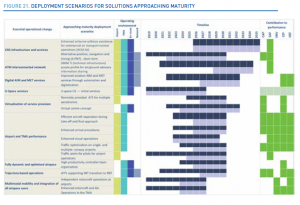
These activities contribute to standardisation activity and support plans to implement initial U-space services among member states. However, they also highlight complexities associated with delivering new U-space services and capabilities. The findings call for an expansion of research into performance requirements, standardisation activity and operational procedures. This is reflected in the ATM Masterplan deployment programme which underlines the need for these activities to not only continue but to accelerate over the next decade.
The European ATM Master Plan is the agreed roadmap that connects research and development activities with deployment scenarios to achieve the Single European Sky performance objectives. It is the basis for the development and deployment activities of the SESAR project.
For more information visit:
www.sesarju.eu/news/sesar-sets-out-roadmap-drone-integration-europe



